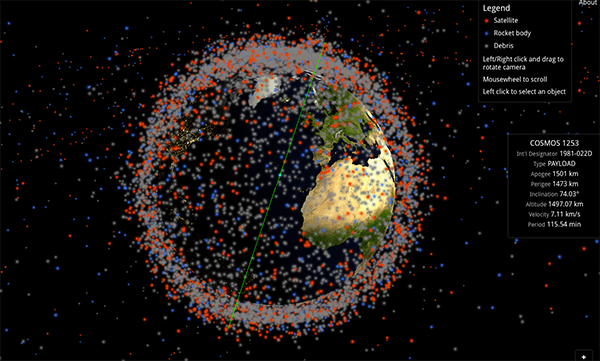
There are approximately 500,000 small orbital debris (between one and 10 centimeters in diameter) and approximately 21,000 larger fragments (more than 10 centimeters) rotating around the Earth at this time, according to NASA's Orbital Debris Program Office.
Now you can see them all in real time thanks to the work of a young programmer named James Yoder.
Stuff in Space
The web created by Yoder is called Stuff in Space. Just enter it to contemplate all the orbital fragments. What we see as soon as we enter is a slowly rotating globe (which shows day and night accurately) surrounded by several color-coded points representing satellites (red), debris (gray) and discarded rockets (blue).
As you slide the mouse across the screen, satellite orbits and large debris are highlighted as blue lines and their names or designations are displayed in the text.

You can also scroll over the "Groups" section to see views of some of the largest collections of related objects, such as the United States GPS satellite network, Russia's rival positioning system, GLONASS, and the remnants of the accidental collision of 2009 between a Russian military satellite and the US communications satellite (Iridium 33 and Kosmos 2251). There is even a search function, if you have a particular satellite name in mind.
The data from the orbits come from SpaceTrack, a public access website operated by the United States Department of Defense.
Yoder, a freshman engineering student at the University of Texas-Austin, and a former participant in the FIRST Robotics Challenge, created Stuff In Space in the course of "about a month, working in my spare time." He is also willing to expand the project with more information, and has published the source code on Github so that others can emulate and expand his work.
With regard to the reason that has led Yoder to take so much work in making this project, he himself has declared:
I hope that people get a better understanding of the wide variety of things that orbit their heads, and maybe they will learn a little about how orbits work. Personally, I never realized how many things there are until I saw the satellites plotted for the first time.